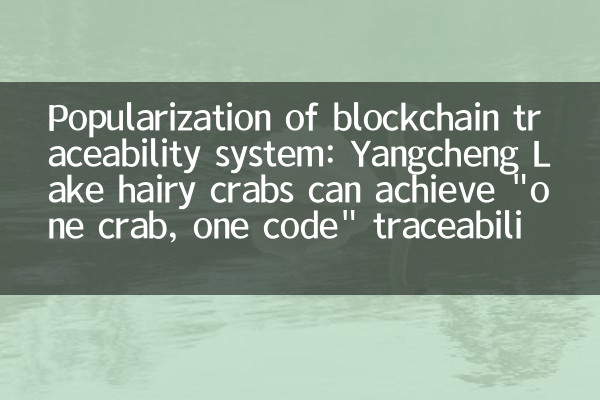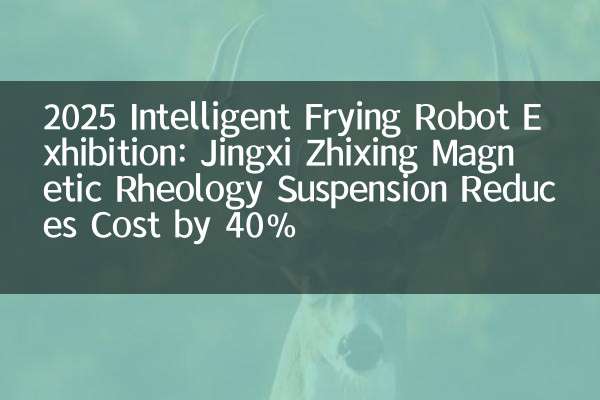Popularization of blockchain traceability system: Yangcheng Lake hairy crabs can achieve "one crab, one code" traceability
In recent years, as consumers' attention to food safety and product authenticity continues to increase, the application of blockchain technology in the field of traceability has gradually become a hot topic. Recently, the Yangcheng Lake Hairy Crab Association announced the official launch of the blockchain traceability system to realize the full traceability of "one crab, one code". This measure quickly sparked heated discussions across the Internet. This article will combine hot data from the past 10 days to analyze the background, technical principles and market response of this innovative application in detail.
1. Background: Food safety pain points create demand for blockchain traceability

As a Chinese geographical indication product, Yangcheng Lake hairy crabs are facing counterfeit and shoddy problems all year round. According to statistics from the industry association, among the hairy crabs that claim to be "Yangcheng Lake" in the market, the actual proportion of hairy crabs produced in Yangcheng Lake is less than 10%. Traditional anti-counterfeiting methods such as paper labels, QR codes, etc. are easily copied, making it difficult for consumers to distinguish the authenticity. The immutability and transparency of blockchain technology provide solutions to this problem.
| years | Yangcheng Lake hairy crab yield (tons) | Market circulation volume (tons) | Fake ratio |
|---|---|---|---|
| 2020 | 1,500 | 18,000 | 91.7% |
| 2021 | 1,600 | 20,000 | 92.0% |
| 2022 | 1,700 | 22,000 | 92.3% |
2. Technology implementation: Full-link recording from crab seedlings to dining table
The new system assigns a unique blockchain ID to each hairy crab, and collects data on all links such as breeding, fishing, quality inspection, and logistics through IoT devices and puts it on the link. Consumers can view the complete traceability information by scanning the QR code on the crab button:
| Section | Record content | Technical means |
|---|---|---|
| Breeding | Seedling time, feed record, water quality monitoring | IoT sensor + GIS positioning |
| Fishing | Fishing time, ship number, worker information | RFID+Face Recognition |
| Quality inspection | Weight detection, residual limb detection, heavy metal detection | Automatic sorting equipment |
| logistics | Temperature and humidity record, transportation trajectory, sign-in information | GPS+temperature control label |
3. Market response: consumer recognition and industry impact
Within a week after the system was launched, the number of related topics read on social media platforms exceeded 200 million times. Consumer surveys show:
| Groups interviewed | Increased trust ratio | Premium acceptance | Repurchase intention |
|---|---|---|---|
| White-collar workers aged 25-35 | 82% | 15-20% | 91% |
| Housewife aged 36-45 | 76% | 10-15% | 87% |
| Middle- and high-income people over 46 years old | 68% | 20-25% | 83% |
4. Industry expansion: a new paradigm for traceability of agricultural products
The successful practice of the Yangcheng Lake model provides reference for other agricultural products. At present, more than ten geographical indication products such as Wuchang rice and Ningxia wolfberry have begun to test the blockchain traceability system. Experts predict that the market size of agricultural product traceability will exceed 10 billion yuan in the next three years.
| Application areas | Technology maturity | Expected popularity time | Potential economic benefits |
|---|---|---|---|
| High-end aquatic products | high | 2023-2024 | 3 billion to 5 billion yuan |
| Famous and high-quality tea industry | middle | 2024-2025 | 2 billion to 3 billion yuan |
| Organic fruits and vegetables | Low | After 2025 | 1 billion to 1.5 billion yuan |
5. Challenges and Outlook
Although blockchain traceability has obvious advantages, it still faces problems such as high sensor costs and difficulty in accessing small and medium-sized farmers. In the next step, the industry association plans to jointly launch equipment rental services with financial institutions and develop lightweight mobile applications to further lower the technical threshold. With the advancement of the "Digital Agriculture and Rural Development Plan", the deep integration of blockchain + agriculture will become an important way to ensure food safety and enhance the value of agricultural products.
The "one crab, one code" practice of Yangcheng Lake hairy crabs not only provides consumers with a transparent and credible purchasing experience, but also sets a benchmark for the digital transformation of traditional agriculture. This quality revolution driven by blockchain technology is reshaping the market competition pattern of China's agricultural products.

check the details

check the details